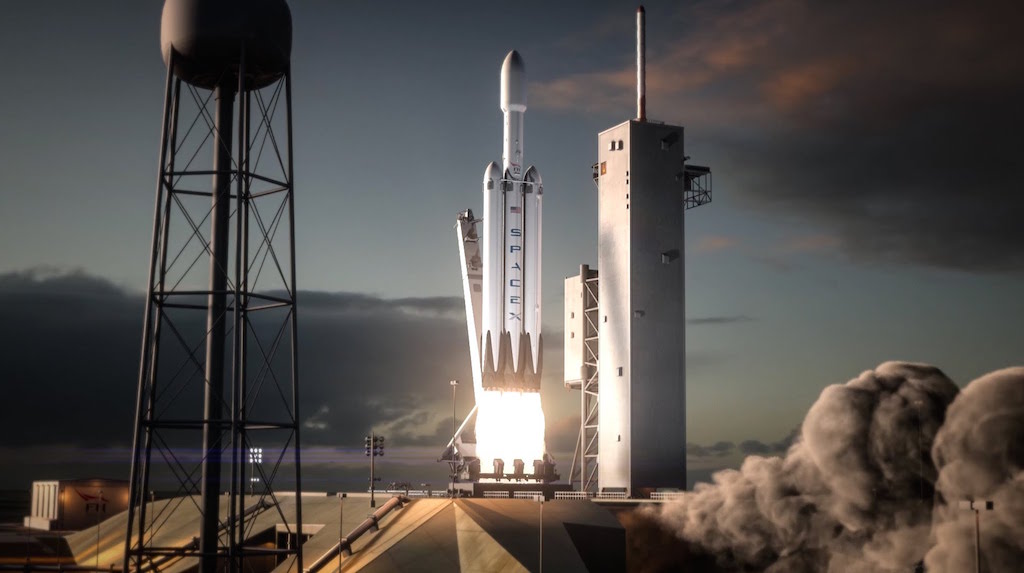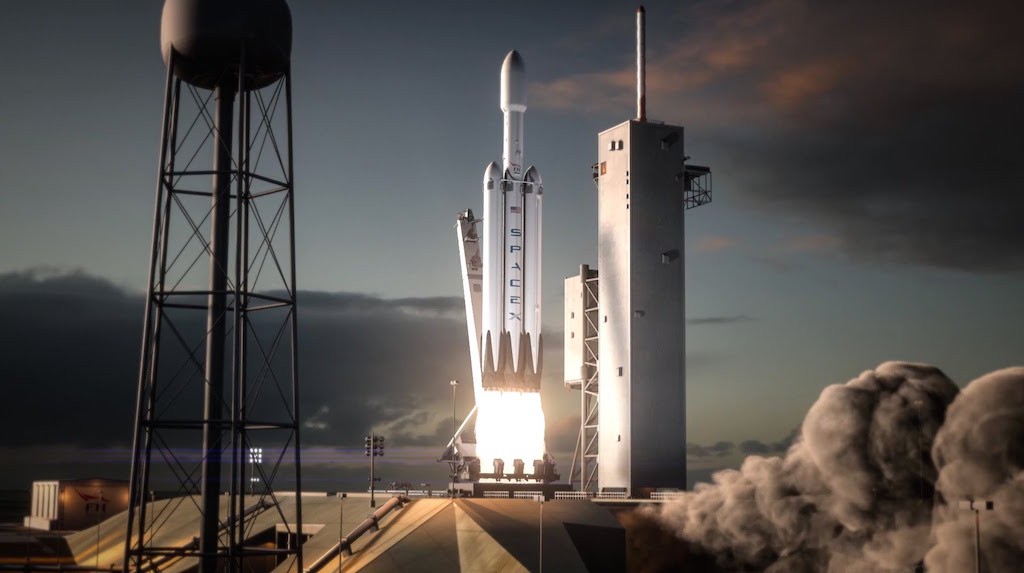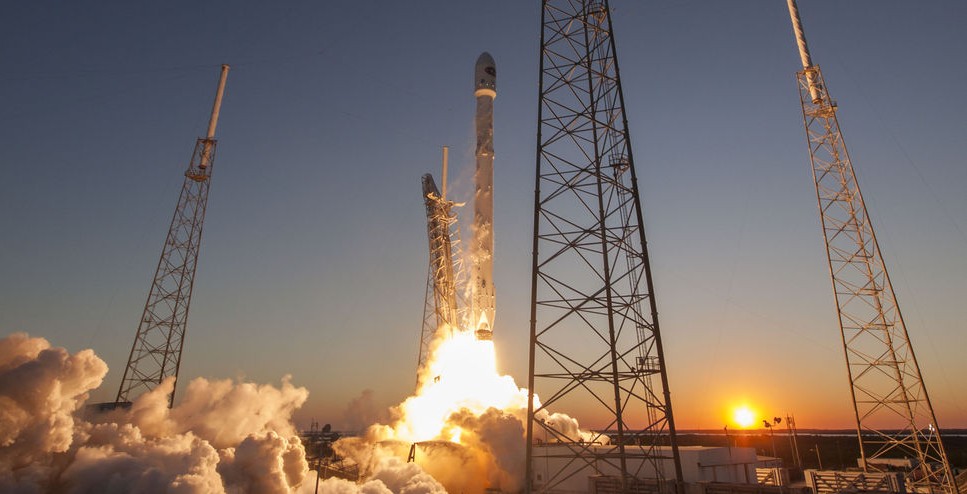

News
SpaceX Receives Pentagon Help To Develop New Rocket Engine
SpaceX has been awarded a Pentagon contract for development of its next generation Raptor rocket engine, which is 6 times more powerful than the Merlin engine it uses now.
The U.S. Department of Defense has announced a $33.7 million dollar contract awarded to SpaceX for the development of the Raptor rocket propulsion system prototype as part of the Evolved Expendable Launch Vehicle (EELV) program. The Raptor engine burns a mixture of liquid methane and liquid oxygen, and designed to produce six times the thrust of the Merlin engines SpaceX recently used on its historic mission that saw its first stage rocket land itself back on earth from orbit. Here’s why that’s important to SpaceX.
Currently, virtually all large military satellites launches are done by the United Launch Alliance, a consortium made up of Lockheed Martin and Boeing. In 2013, ULA was awarded a $1.1 billion contract for multiple launches using Lockheed Martin’s Atlas V or Boeing’s Delta IV rockets. SpaceX wants a piece of that pie.
According to Motley Fool, both ULA rockets use RD-180 engines purchased from Russia’s Energomash, which is majority owned by the Russian government. After Russia’s 2014 actions in Crimea, the US slapped economic sanctions on it and Energomash. They in turn decided they would not sell any more rocket engines to ULA. The US Congress responded to that by prohibiting the US military from using any Russian rocket engines to launch its satellites.
But Houston, we have a problem. No rocket engines means no satellite launches. ULA placed its hopes on either Blue Origin or Aerojet Rocketdyne coming up with a new rocket engine to replace the RD-180 it can no longer buy from Energomash, but that process could take 3 or 4 years to complete.
So Congress has relented somewhat. Buried in the more than 1,000 page appropriations bill approved just before Christmas, it gave ULA approval to buy a supply of RD-180s — just enough to keep it in the military launch business for the time being. But clearly, America needs American made rockets for its various space programs going forward.

“SpaceX Falcon Heavy will be the most powerful operational rocket in the world by a factor of two” [Source: SpaceX]
Enter SpaceX, which received authorization to bid for Pentagon business last year. The next generation Raptor engines will be used to power the upcoming Falcon 9 “heavy lift” and “super heavy lift” rockets. The more powerful Falcon 9 could be used in place of the traditional satellite launching vehicles from Lockheed and Boeing. That would open the door for lucrative government contracts to flow to SpaceX instead of ULA.
There is a lot of money up for grabs launching satellites for the military over next several years. SpaceX has been funding its Raptor engine program out of its own pocket up until now, but under terms of the new contract, the Pentagon will provide $1 in development funding for every $2 invested by SpaceX.
Lockheed and Boeing might be giving way to the Aerospace upstart. SpaceX, like every venture Elon Musk is involved with, will put every ounce of effort into getting to the finish line ahead of everyone else.
More SpaceX News
- SpaceX Shows Off Crew Dragon Capsule Hover Test
- SpaceX Delivers Jason-3 Satellite, Almost Sticks Falcon 9 Landing at Sea
- Watch as SpaceX Completes a Historic Rocket Landing

News
Elon Musk’s Grok AI to be used in U.S. War Department’s bespoke AI platform
The partnership aims to provide advanced capabilities to 3 million military and civilian personnel.

The U.S. Department of War announced Monday an agreement with Elon Musk’s xAI to embed the company’s frontier artificial intelligence systems, powered by the Grok family of models, into the department’s bespoke AI platform GenAI.mil.
The partnership aims to provide advanced capabilities to 3 million military and civilian personnel, with initial deployment targeted for early 2026 at Impact Level 5 (IL5) for secure handling of Controlled Unclassified Information.
xAI Integration
As noted by the War Department’s press release, GenAI.mil, its bespoke AI platform, will gain xAI for the Government’s suite of tools, which enable real-time global insights from the X platform for “decisive information advantage.” The rollout builds on xAI’s July launch of products for U.S. government customers, including federal, state, local, and national security use cases.
“Targeted for initial deployment in early 2026, this integration will allow all military and civilian personnel to use xAI’s capabilities at Impact Level 5 (IL5), enabling the secure handling of Controlled Unclassified Information (CUI) in daily workflows. Users will also gain access to real‑time global insights from the X platform, providing War Department personnel with a decisive information advantage,” the Department of War wrote in a press release.
Strategic advantages
The deal marks another step in the Department of War’s efforts to use cutting-edge AI in its operations. xAI, for its part, highlighted that its tools can support administrative tasks at the federal, state and local levels, as well as “critical mission use cases” at the front line of military operations.
“The War Department will continue scaling an AI ecosystem built for speed, security, and decision superiority. Newly IL5-certified capabilities will empower every aspect of the Department’s workforce, turning AI into a daily operational asset. This announcement marks another milestone in America’s AI revolution, and the War Department is driving that momentum forward,” the War Department noted.
News
Tesla FSD (Supervised) v14.2.2 starts rolling out
The update focuses on smoother real-world performance, better obstacle awareness, and precise end-of-trip routing, among other improvements.

Tesla has started rolling out Full Self-Driving (Supervised) v14.2.2, bringing further refinements to its most advanced driver-assist system. The new FSD update focuses on smoother real-world performance, better obstacle awareness, and precise end-of-trip routing, among other improvements.
Key FSD v14.2.2 improvements
As noted by Not a Tesla App, FSD v14.2.2 upgrades the vision encoder neural network with higher resolution features, enhancing detection of emergency vehicles, road obstacles, and human gestures. New Arrival Options let users select preferred drop-off styles, such as Parking Lot, Street, Driveway, Parking Garage, or Curbside, with the navigation pin automatically adjusting to the user’s ideal spot for precision.
Other additions include pulling over for emergency vehicles, real-time vision-based detours for blocked roads, improved gate and debris handling, and extreme Speed Profiles for customized driving styles. Reliability gains cover fault recovery, residue alerts on the windshield, and automatic narrow-field camera washing for new 2026 Model Y units.
FSD v14.2.2 also boosts unprotected turns, lane changes, cut-ins, and school bus scenarios, among other things. Tesla also noted that users’ FSD statistics will be saved under Controls > Autopilot, which should help drivers easily view how much they are using FSD in their daily drives.
Key FSD v14.2.2 release notes
Full Self-Driving (Supervised) v14.2.2 includes:
- Upgraded the neural network vision encoder, leveraging higher resolution features to further improve scenarios like handling emergency vehicles, obstacles on the road, and human gestures.
- Added Arrival Options for you to select where FSD should park: in a Parking Lot, on the Street, in a Driveway, in a Parking Garage, or at the Curbside.
- Added handling to pull over or yield for emergency vehicles (e.g. police cars, fire trucks, ambulances).
- Added navigation and routing into the vision-based neural network for real-time handling of blocked roads and detours.
- Added additional Speed Profile to further customize driving style preference.
- Improved handling for static and dynamic gates.
- Improved offsetting for road debris (e.g. tires, tree branches, boxes).
- Improve handling of several scenarios, including unprotected turns, lane changes, vehicle cut-ins, and school buses.
- Improved FSD’s ability to manage system faults and recover smoothly from degraded operation for enhanced reliability.
- Added alerting for residue build-up on interior windshield that may impact front camera visibility. If affected, visit Service for cleaning!
- Added automatic narrow field washing to provide rapid and efficient front camera self-cleaning, and optimize aerodynamics wash at higher vehicle speed.
- Camera visibility can lead to increased attention monitoring sensitivity.
Upcoming Improvements:
- Overall smoothness and sentience.
- Parking spot selection and parking quality.
News
Tesla is not sparing any expense in ensuring the Cybercab is safe
Images shared by the longtime watcher showed 16 Cybercab prototypes parked near Giga Texas’ dedicated crash test facility.

The Tesla Cybercab could very well be the safest taxi on the road when it is released and deployed for public use. This was, at least, hinted at by the intensive safety tests that Tesla seems to be putting the autonomous two-seater through at its Giga Texas crash test facility.
Intensive crash tests
As per recent images from longtime Giga Texas watcher and drone operator Joe Tegtmeyer, Tesla seems to be very busy crash testing Cybercab units. Images shared by the longtime watcher showed 16 Cybercab prototypes parked near Giga Texas’ dedicated crash test facility just before the holidays.
Tegtmeyer’s aerial photos showed the prototypes clustered outside the factory’s testing building. Some uncovered Cybercabs showed notable damage and one even had its airbags engaged. With Cybercab production expected to start in about 130 days, it appears that Tesla is very busy ensuring that its autonomous two-seater ends up becoming the safest taxi on public roads.
Prioritizing safety
With no human driver controls, the Cybercab demands exceptional active and passive safety systems to protect occupants in any scenario. Considering Tesla’s reputation, it is then understandable that the company seems to be sparing no expense in ensuring that the Cybercab is as safe as possible.
Tesla’s focus on safety was recently highlighted when the Cybertruck achieved a Top Safety Pick+ rating from the Insurance Institute for Highway Safety (IIHS). This was a notable victory for the Cybertruck as critics have long claimed that the vehicle will be one of, if not the, most unsafe truck on the road due to its appearance. The vehicle’s Top Safety Pick+ rating, if any, simply proved that Tesla never neglects to make its cars as safe as possible, and that definitely includes the Cybercab.









